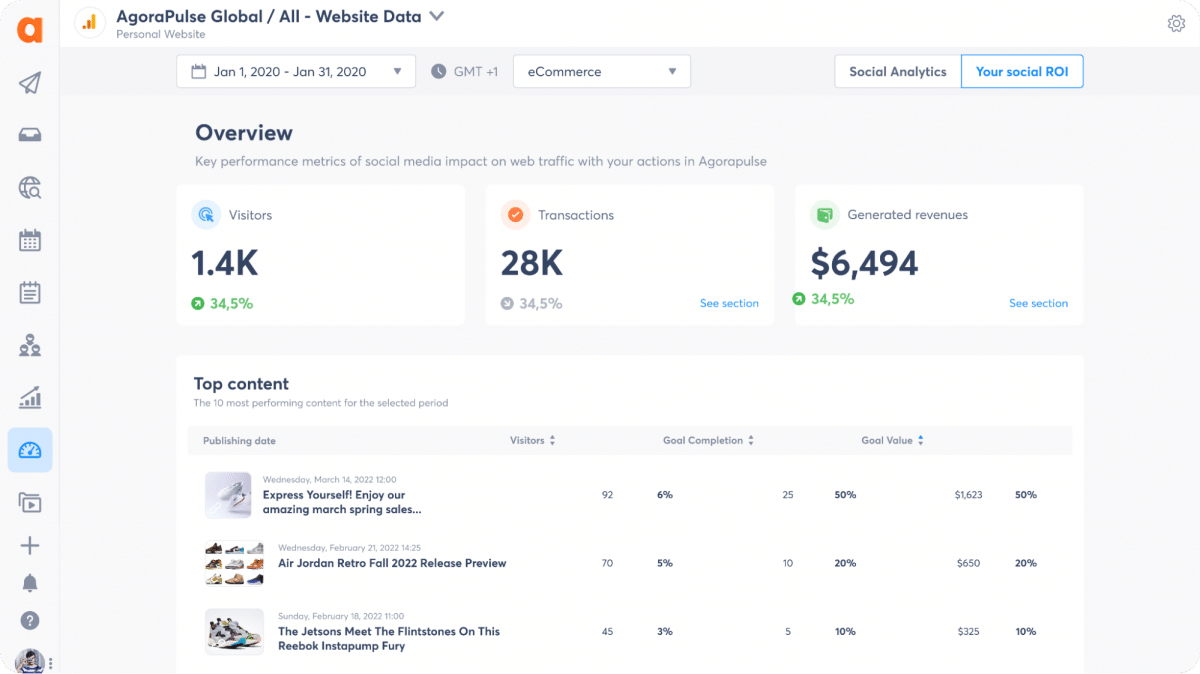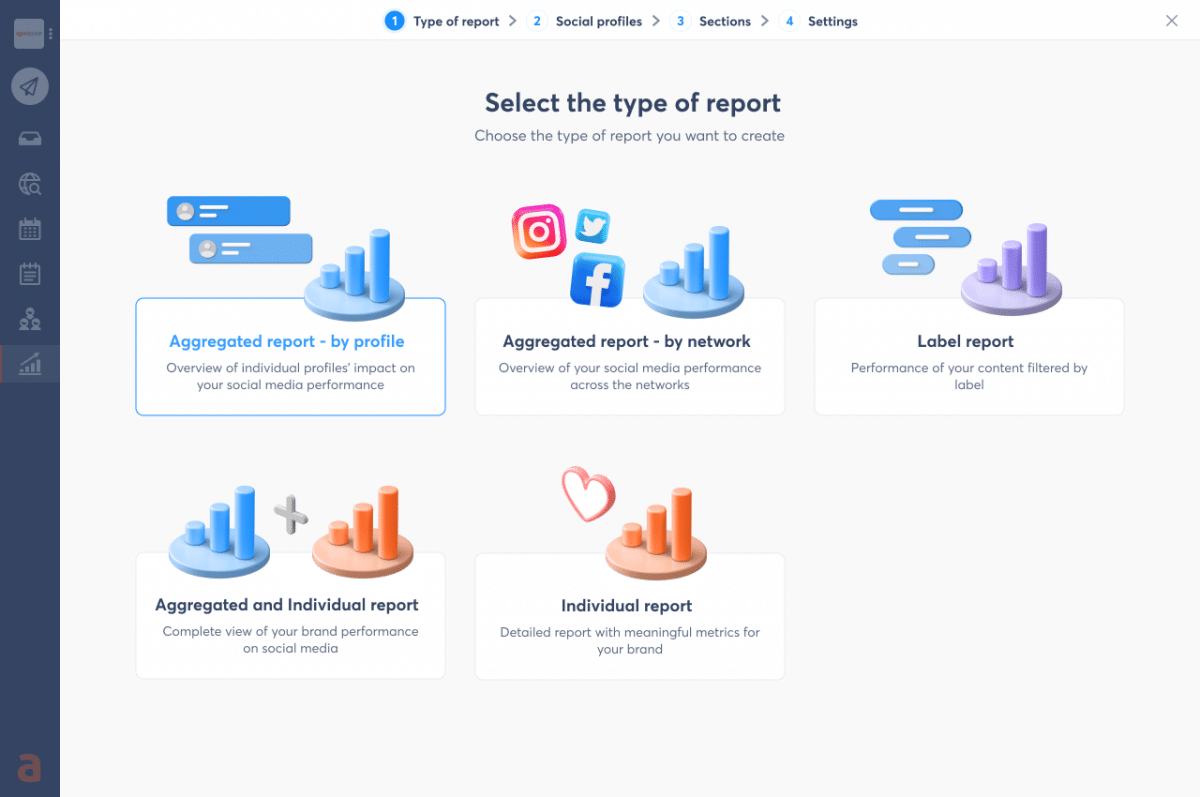As a business owner, you are already well-aware that setting business goals and objectives for your company is crucial to your success. Without clear direction and a well-defined path, your business is likely to flounder and struggle to stay afloat. But how do you decide which business goals and objectives to pursue in the first place? In this article, we’ll explore the best practices for setting effective business goals and objectives and provide you with a clear path to business success.
Why Do Business Goals and Objectives Matter?
Setting goals and objectives is an essential part of any business strategy and here’s why:
Provides direction and motivation
Goals and objectives provide direction, focus, and motivation for your team. When your team has a shared understanding of what they are working towards, they can work together more effectively and achieve more significant results.
Improves decision-making
Additionally, goals provide a framework for decision-making and help companies prioritize and allocate their resources effectively, ultimately leading to more successful business outcomes.
For example, if your goal is to increase revenue in the next quarter, your team can work together to identify new sales opportunities, improve customer retention, and streamline operations to achieve that goal.
Tracks your success
Goals and objectives also serve as a measuring stick for success. By defining clear and realistic objectives, you can measure your progress and track your success over time.
However, it’s not enough to simply set goals for your business. To truly achieve success, you must understand the role they play in your business strategy.
Aligning Business Goals With Your Mission and Vision
To be effective, your goals and objectives must align with your company’s mission and vision. This helps to ensure that your team is working towards a shared purpose and that your business is moving in the right direction.
For example, if your company’s mission is to provide high-quality and affordable social media marketing to small business owners, your goals might include increasing client satisfaction and reducing customer churn, while keeping your business overhead to a minimum.
By aligning your goals with your mission and vision, you can create a sense of purpose and motivation that will drive your team toward success. Your team will understand the importance of their work and be more invested in achieving the goals that you have set for the business.
Most importantly, this will allow you to set your business up for success going forward.
Setting SMART Business Goals
If you are certain you have nailed down a goal that is aligned with your mission and vision, what should your next step be?
You want to be sure that your goal follows the SMART framework.
SMART stands for: Specific, Measurable, Achievable, Relevant, and Time-bound. Let’s explore each of these in more detail.
Specific
The most important thing when goal-setting is to set specific and clearly defined goals. This means that they should be focused and well-defined, leaving no room for ambiguity. Your team should have a clear understanding of what they are working towards and why it matters.
For example, instead of setting a goal to “increase sales,” a specific goal would be to “increase sales by 10% in the next quarter.”
Being specific also helps you to prioritize your short-term and long-term goals accordingly. By clearly defining what you want to achieve, you can focus your efforts on the most important areas of your business.
Measurable
To track progress toward your goals, they must be measurable. This means you must be able to quantify and track them with an actual number. Measuring progress also helps to keep your team motivated and focused, as they can see the impact of their efforts as you work on achieving more long-term goals.
Measuring progress can be done in a variety of ways, depending on the goal. For example, if your goal is to increase website traffic, you can track the number of visitors to your site each month using a tool like Google Analytics. If your goal is to increase your engagement on Facebook, you can use a social media tool like Agorapulse to measure metrics such as likes, shares, and comments.
Monitoring your social media metrics helps understand how much progress you’ve made toward your goal.
Achievable
Your goals must be achievable. This means that they should be realistic, given your resources, capabilities, and timeframe. Setting unrealistic goals can lead to frustration and demotivation among your team.
When setting goals, it’s important to take into account your team’s skills and abilities, as well as any external factors that may impact your ability to achieve the goal. For example, if your goal is to launch a new product, you need to consider factors such as production time, marketing budget, and competition.
Relevant
Your goals should be relevant to your business and align with your mission and vision. They should help you achieve your strategic objectives and drive growth and success. By setting relevant goals, you ensure that your efforts are focused on areas that directly contribute to your business’s purpose and long-term direction.
Time-bound
Your goals should have a specific time frame for completion. This helps to create a sense of urgency and accountability among your team.
A time frame also helps in planning and allocating your resources such as time, finances, and manpower, accordingly. This ensures that you have a clear plan of action and adequate resources to meet the deadline.
When setting deadlines, remember to assess potential risks and obstacles that may affect the timeline. Identify potential bottlenecks, uncertainties, or challenges that could cause delays.
Have contingency plans in place to mitigate these risks and allow for adjustments to the deadline if needed. For example, if your goal is to launch a new website, you need to consider factors such as design time, development time, and testing time.
Once you have set your goals using the SMART framework, you will need to identify the key business objectives that will help you achieve them.
Sign up now for a FREE trial of Agorapulse!
What Are Business Objectives?
Business objectives are specific, measurable, and achievable outcomes that an organization sets to define its purpose, direction, and target outcomes.
These objectives are the building blocks that will help you reach your goals and move your business forward.
Business Goals vs. Business Objectives
If you are having difficulty wrapping your head around the difference between goals and objectives, think about it like this: Your goals are the final destination, and your objectives are the map that will help you get there.

In the figurative sense, of course. No actual map will be provided. This guy is clearly doing things wrong.
Identifying Your Key Business Objectives
Identifying your business objectives requires that you have set out clear goals for your business.
(You did that in the last step, right? If not, go back and do that first.)
Done? Good. Now let’s talk about the main different types of business objectives and how they relate to your business as a whole.
Financial objectives
Financial objectives are the most critical component of any business. These objectives relate to your company’s finances and are essential for ensuring that your business is profitable and sustainable. Financial objectives may include revenue growth, profit margins, and cost reduction.

Pay attention to your financial objectives and this could be you!
Revenue growth
This objective involves increasing your company’s revenue over a specific period. To achieve this objective, you may need to focus on increasing sales, increasing your market share, or developing new products or services.
Profit margins
This objective involves increasing the amount of profit your business earns on each sale. To achieve this objective, you may need to focus on reducing costs, increasing efficiency, or improving pricing strategies.
Cost reduction
This objective involves finding ways to reduce your company’s expenses without compromising quality or productivity. To achieve this objective, you may need to focus on streamlining processes, negotiating better deals with suppliers, or implementing cost-saving measures.
Operational objectives
Operational objectives are another essential component of business success. These objectives relate to the day-to-day running of your business and are critical for ensuring that your business is efficient and effective. Operational objectives may include process improvement, supply chain management, and quality assurance.
Process improvement
This objective involves finding ways to streamline your company’s processes to reduce waste, improve efficiency, and enhance productivity. To achieve this objective, you may need to focus on identifying bottlenecks, eliminating unnecessary steps, or automating certain tasks.
Supply chain management
This objective involves managing your company’s supply chain to ensure that you have the right materials, products, or services at the right time and at the right cost. To achieve this objective, you may need to focus on building strong relationships with suppliers, optimizing inventory levels, or improving logistics processes.
Quality assurance
This objective involves ensuring that your company’s products or services meet or exceed customer expectations. To achieve this objective, you may need to focus on implementing quality control measures, conducting regular inspections, or investing in training and development for your employees.
Download a FREE goal-setting ebook to help you succeed!
Customer-Focused Objectives
Customer-focused objectives are essential for building a loyal customer base and growing your business. These objectives relate to your customers and are critical for ensuring that you are meeting their needs and expectations.
Customer satisfaction
This objective involves ensuring that your customers are happy with your products or services. To achieve this objective, you may need to focus on providing excellent customer service, improving product quality, or enhancing the overall customer experience.
Customer retention
This objective involves ensuring that your customers continue to do business with your company over time. To achieve this objective, you may need to focus on building strong relationships with your customers, offering loyalty programs or incentives, or providing ongoing support and maintenance for your products or services.
Customer loyalty
This objective involves creating a strong emotional connection between your customers and your brand. To achieve this objective, you may need to focus on building a strong brand identity, creating a unique value proposition, or providing exceptional customer experiences.
Employee-focused Objectives
Employee-focused objectives are critical for creating a positive work environment and ensuring that your employees are engaged and productive. These objectives relate to your employees and are essential for building a strong and motivated workforce. Employee-focused objectives may include employee engagement, employee satisfaction, productivity, and retention.
Employee engagement
This objective involves ensuring that your employees are committed to your company’s mission and values. To achieve this objective, you may need to focus on providing opportunities for growth and development, recognizing and rewarding employee achievements, or creating a positive work culture.
Productivity
This objective involves ensuring that your employees are working efficiently and effectively. To achieve this objective, you may need to focus on providing the right tools and resources, setting clear expectations and goals, or implementing performance management systems.
Retention
This objective involves ensuring that your employees stay with your company over time. To achieve this objective, you may need to focus on providing competitive compensation and benefits, offering opportunities for advancement, or creating a supportive and inclusive work environment.
These are just some of the most commonly used business objectives that you should consider following when setting up your business strategy and long-term plan.
Creating a Business Goal-Setting Process
Okay so you’ve got your goals, and you’ve got your objectives. Now what? Well, just setting goals and objectives isn’t enough for many business owners. You need to establish a clear and effective goal-setting process to ensure that your goals are achievable and aligned with your team’s capabilities. Let’s explore some of the key things that should be included in your goal-setting process.
Involve your team
When your team is involved in goal-setting, they feel a sense of ownership and accountability for achieving those goals. This also helps to ensure that your goals are aligned with your team’s capabilities and expertise. Involving your team can also lead to more creative and innovative ideas, as your team members each have valuable perspectives and unique experiences to bring to the table.
One effective way to involve your team in goal-setting is to hold brainstorming sessions. Encourage your team to share their ideas and suggestions for goals and discuss how those goals can be achieved.
Regular check-ins should also be established to track progress. This will help to ensure that your team is staying on track and making progress toward achieving their goals.
Review your goals regularly
This should go without saying, but regularly reviewing and adjusting goals is critical to your business’ success. It is important to periodically assess whether your goals are still relevant and achievable. This allows you to adapt to changes in your business environment, learn from your mistakes, and continuously improve your goal-setting process.
And the best way to assess whether you are on track to reach your goals is to measure your progress along the way. This brings me to the next point…
Measuring Progress of Business Goals
Monitoring and measuring progress is an essential aspect of achieving your goals. It helps you to identify areas that need improvement and will help you adjust your approach if required. Here are some key best practices for monitoring and measuring progress:
Track key performance indicators (KPIs)
Key performance indicators (KPIs) are metrics that help you track your progress toward your goals. These may include financial metrics, operational metrics, and customer metrics. KPIs should be specific, measurable, and relevant to your business objectives. By setting KPIs, you can measure your performance against your goals, benchmark against your competitors, and identify areas that need improvement.
For example, if your goal is to increase your social media engagement your KPIs may include things such as the number of likes, comments, and shares. By tracking these social media metrics, you can determine whether your marketing efforts are effective and prove the ROI of your marketing efforts.
PRO TIP: If you want to make tracking your social media KPIs a whole lot easier, try using a social media management tool that will provide you with detailed metrics for all of your social media channels in one easy-to-access dashboard.

Using Agorapulse for social media management can help you stay on top of your KPIs, and ensure you are on the right track to reach your goals for social platforms like Facebook and Instagram.
For example, in Agorapulse you can track things like shares, likes, comments, reach, growth, and much more.
Plus with the reporting feature, you can easily share all of these important social media insights with clients or key stakeholders by downloading a customizable, PDF report. All within minutes.
Regular progress reports
Regular progress reports help to keep your team accountable and motivated. These can be formal or informal and should include updates on progress towards your goals and any adjustments to your approach. By sharing progress reports with your team or clients, you can ensure that everyone is on the same page and working towards a common goal.
Progress reports can also help you to identify areas where your team may need additional support or resources. For example, if your team is struggling to meet a particular KPI, you can provide additional training or resources to help improve your chances of success.
Celebrate milestones and achievements
Celebrating milestones and achievements is an important part of keeping your team motivated and engaged. By recognizing individual and team accomplishments, you can boost morale and encourage your team to continue working towards your goals.
There are many ways to celebrate milestones and achievements, including team-building activities, reward systems, and recognition programs. For example, you could offer bonuses or incentives for meeting KPIs, or organize a team outing to celebrate a major achievement.
Learn from successes and failures
Learning from successes and failures is critical to your success. By analyzing your successes and failures, you can identify what worked and what didn’t, and adjust your approach accordingly.
For example, if you set a goal and were successful, it is important to analyze what strategies and tactics contributed to that success.
On the other hand, if you were not successful in meeting your goal, it is important to analyze what went wrong and adjust your approach going forward.
Remember that failures should not be seen as a negative outcome, but rather as an opportunity to learn and improve. By embracing failures and using them as a learning tool, you can continuously improve how your business operates.
Setting Business Goals Is the Key to Success
Setting the right business goals and objectives is the key to running a viable and successful business. By following the best practices outlined in this article, you can ensure that your goals and business objectives are aligned with your mission and vision, and will also contribute to building a profitable and sustainable business long-term.
Discover how Agorapulse can help you reach your social media goals. Sign up now for a FREE demo.








